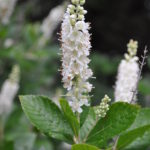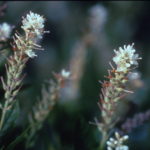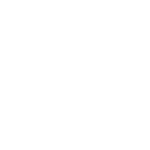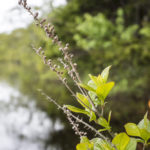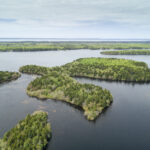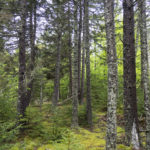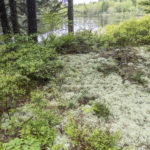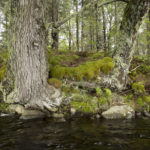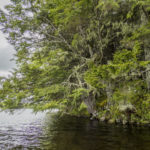Rare plants and unique forest
La Grande Île conservation lands encompass almost an entire island on Belliveau Lake in Digby County. The property is significant as one of only two protected habitats for the nationally imperilled Sweet Pepperbush in Canada.
The scenic shoreline supports extensive habitat for Sweet Pepperbush. The towering forests are rich and diverse, well on their way to becoming Wabanaki old growth forests, a rarity in Nova Scotia. The conservation lands will help both the rare plants and unique forests to thrive.
Sweet Pepperbush is listed as “threatened” on Canada’s endangered species list, making efforts to protect the species and its habitat critical in preventing species extinction. While historically more widely distributed throughout eastern North America, Sweet Pepperbush is now restricted to small pockets within this range. Within Canada, it is found only on six Nova Scotian lakes, with a significant population on Belliveau Lake. Protecting this habitat is particularly significant where increasing habitat fragmentation and cottage development threaten all remaining sites.
The island is also home to beautiful and diverse Wabanaki forests. The island supports a complex mixture of softwood and hardwood species of various ages. On the forest floor there is enough light to allow many native annuals and perennials to thrive. Without vehicle or foot traffic, the soils are saved from compaction and the most delicate plants can grow unimpeded. The rich soils, species composition and structure of the island’s forests suggest that they are well on the way to become old growth forests. Less than 1% of Nova Scotia’s forests are old growth.
The lands were donated to the Nature Trust by Mary Guptill and Delbé Comeau. Recognising the unique nature of this land, Mary devoted herself to protecting the entire island. She began her quest in the early 1980’s, reaching out to every landowner on the island to share her vision of amalgamating all the parcels to protect the rare plants and unique forests for conservation.
At the time of this land donation, Mary had acquired over 90% of the island. She expressed her gratitude to all the landowners for their trust and support while she worked to fulfil her conservation vision.
Mary’s wish is to see the island remain wild, in perpetuity, its shorelines undeveloped and forests left to thrive. She and Delbé entrusted the lands to the Nature Trust, through a generation donation to provide the essential stewardship to ensure this ecological oasis and the species it supports will be protected, forever.
The island did not have an official name, so Mary suggested the French name, La Grande Île, in recognition of long-standing Acadian presence in the area.
With Thanks
The Nature Trust is extremely grateful to Mary Guptill and Delbé Comeau for this incredibly generous and significant gift of nature. Thank you also to all our supporters, conservation partners and volunteers for making this conservation success possible.
Special thanks to our major endangered species funding partners: Environment and Climate Change Canada (Habitat Stewardship Program), Marguerite Hubbard Charitable Trust, Nova Scotia Crown Share Land Legacy Trust, and the Sage Environment Program.

